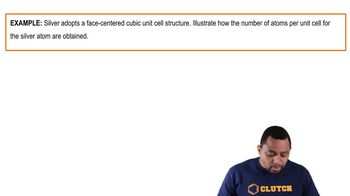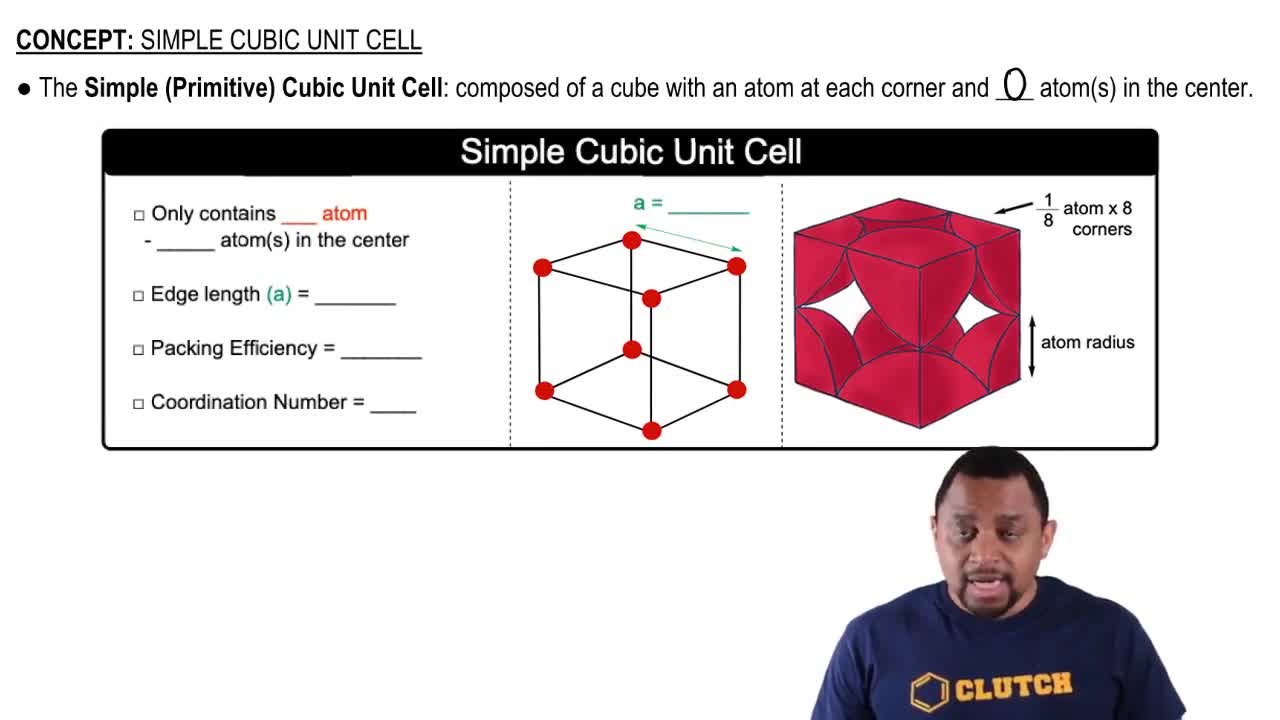Here are the essential concepts you must grasp in order to answer the question correctly.
Density and its Calculation
Density is defined as mass per unit volume, typically expressed in grams per cubic centimeter (g/cm³). In this context, the density of the metal sample is given as 6.84 g/cm³, which can be used alongside the volume of the unit cell to determine the mass of the metal atoms within that cell. Understanding how to relate density to atomic weight and volume is crucial for solving the problem.
Recommended video:
Face-Centered Cubic (FCC) Structure
A face-centered cubic (FCC) structure is a type of crystal lattice where atoms are located at each of the corners and the centers of all the faces of the cube. The edge length of the unit cell is critical for calculating the atomic radius, which can be derived from the relationship between the edge length and the atomic radius in an FCC lattice. This structure is common in metals and influences their properties.
Recommended video:
Face Centered Cubic Example
X-ray Diffraction and Unit Cell Parameters
X-ray diffraction is a technique used to determine the atomic structure of a crystal by measuring the angles and intensities of scattered X-rays. The edge length of the unit cell, measured as 350.7 pm (picometers), is essential for calculating the volume of the unit cell and subsequently the number of atoms it contains. This information, combined with density, allows for the determination of atomic weight and the identity of the metal.
Recommended video:
 Verified step by step guidance
Verified step by step guidance


